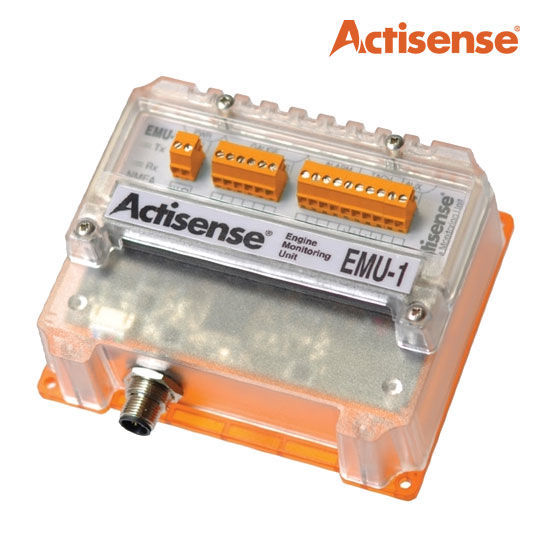Description
Actisense NMEA2000 Engine Monitoring Unit: Transform Your Analog Gauges to Digital Navigation
The Actisense NMEA2000 Engine Monitoring Unit revolutionizes how vessel operators monitor critical engine performance data. This innovative specialized analogue to NMEA 2000 gateway converts analog engine signals into digital NMEA 2000 messages that display seamlessly across your multifunction display network. Rather than replacing expensive engines or upgrading to costly digital-ready systems, the EMU-1 bridges the gap between legacy analog engine instrumentation and contemporary marine navigation technology, enabling vessel owners to protect their existing investment while gaining modern monitoring capabilities.
Understanding Analog Signal Conversion Technology
The fundamental challenge facing many vessel operators involves integrating aging analog engine instrumentation with modern NMEA 2000 networks. Consequently, the Actisense NMEA2000 Engine Monitoring Unit solves this compatibility problem through intelligent digital conversion. The device accepts analog signals from engine gauges and senders, then transforms them into standardized NMEA 2000 messages. Furthermore, this conversion process removes optical reading errors common with analog dials, ensuring accurate engine parameter display across all connected instruments. By eliminating parallax distortion inherent to mechanical gauges, digital readings provide superior precision and reliability for critical engine monitoring.
Comprehensive Multi-Engine Support and Parameter Monitoring
Flexibility defines this gateway’s architecture for diverse marine applications. The EMU-1 accommodates up to two separate engines through a single device, monitoring vital parameters including temperature, pressure, RPM, and fluid levels simultaneously. Additionally, the system features six gauge inputs for parameter monitoring, four configurable alarm inputs, and two tachometer inputs for complete engine management. This comprehensive input configuration supports monitoring across multiple engine types and manufacturers, adapting to diesel engines, gasoline systems, and hybrid powerplants. The PC-based configuration tool allows customization for specific engine makes and models, ensuring optimal calibration regardless of your vessel’s propulsion system.
Cost-Effective Installation and Integration Benefits
Budget considerations significantly impact vessel upgrade decisions. Therefore, implementing the Actisense NMEA2000 Engine Monitoring Unit costs substantially less than replacing engines with digital-ready alternatives. You avoid expensive engine removal and replacement while gaining complete engine parameter visibility on your network. Moreover, installation proves remarkably straightforward, requiring minimal technical expertise or invasive modifications to existing systems. The device maintains wide power compatibility from 9 to 35 volts DC, accommodating various marine electrical architectures. Additionally, optional DIN rail mounting allows flexible installation locations throughout your vessel, adapting to different cabin layouts and equipment configurations.
Advanced Engine Data Logging and Diagnostics
Modern vessel operators demand detailed operational records for maintenance planning and performance analysis. Accordingly, the EMU-1 automatically logs total engine hours by monitoring tachometer input, storing data in non-volatile memory for permanent retention. This feature enables preventive maintenance scheduling based on actual engine runtime rather than calendar dates. Furthermore, the device includes diagnostic LED indicators providing real-time operational feedback during installation and troubleshooting. The integration with Actisense Toolkit software allows comprehensive PC-based diagnostics, data viewing, and configuration adjustments. These diagnostic capabilities prove invaluable when identifying network issues affecting any connected NMEA 2000 device.
Robust Electrical Protection and Environmental Durability
Marine electrical environments present extreme challenges including voltage transients, battery load dumps, and saltwater corrosion. Therefore, the EMU-1 incorporates comprehensive protection featuring continuous reverse polarity protection meeting SAE J1113 standards. Additionally, the device withstands overvoltage protection to 40 volts and can tolerate ignition pulses reaching ±500 volts without damage. The galvanic isolation uses IsoDrive technology, providing 2500 volts input to ground protection. Environmental sealing reaches IP66 rating, protecting internal components from water and dust ingress through expanded silicone foam gaskets and closed-cell polyurethane splash guards. Wide operating temperature tolerance from -20°C to +55°C ensures reliable performance across tropical and cold-water cruising environments.
Certification and Compliance Standards
Professional vessel operations demand equipment meeting rigorous international standards. Consequently, the Actisense NMEA2000 Engine Monitoring Unit achieves full NMEA 2000 certification, confirming compliance with marine industry specifications. The device meets EMC requirements per EN 60945 sections 9 and 10, ensuring electromagnetic compatibility within your onboard electrical system. Additionally, three-year manufacturer warranty covers defects and operational failures. The combination of full NMEA 2000 certification and comprehensive EMC compliance ensures your engine monitoring system integrates seamlessly with other certified marine electronics without causing interference or compatibility issues.
For more information please contact us.
Check our news on Facebook






